If you’re here, you know already that climbing is more than just climbing. It’s a social sport, and our experiences in the climbing world are often driven and shaped by our human connections. This sport combines many of the most poignant social aspects of others: the counter-culture grit of skate circles, the trust and group problem-solving of team sports, and the exhiliration of shared extreme-sport peril, just to name a few. Given this, the climbers that you choose to surround yourself with will have a huge bearing on your relationship with the sport, and may have an even more profound effect on your life overall. So, how do you find the people that will have a positive effect on you, and that you can affect positively in return? This might feel like an impossible task, even outside of the climbing world; “finding your people” can be a lifelong journey.
In my personal experience, I’ve found that it’s all about compatability, not similarity. Here’s a list of some basic climber traits and how they interact with each other.
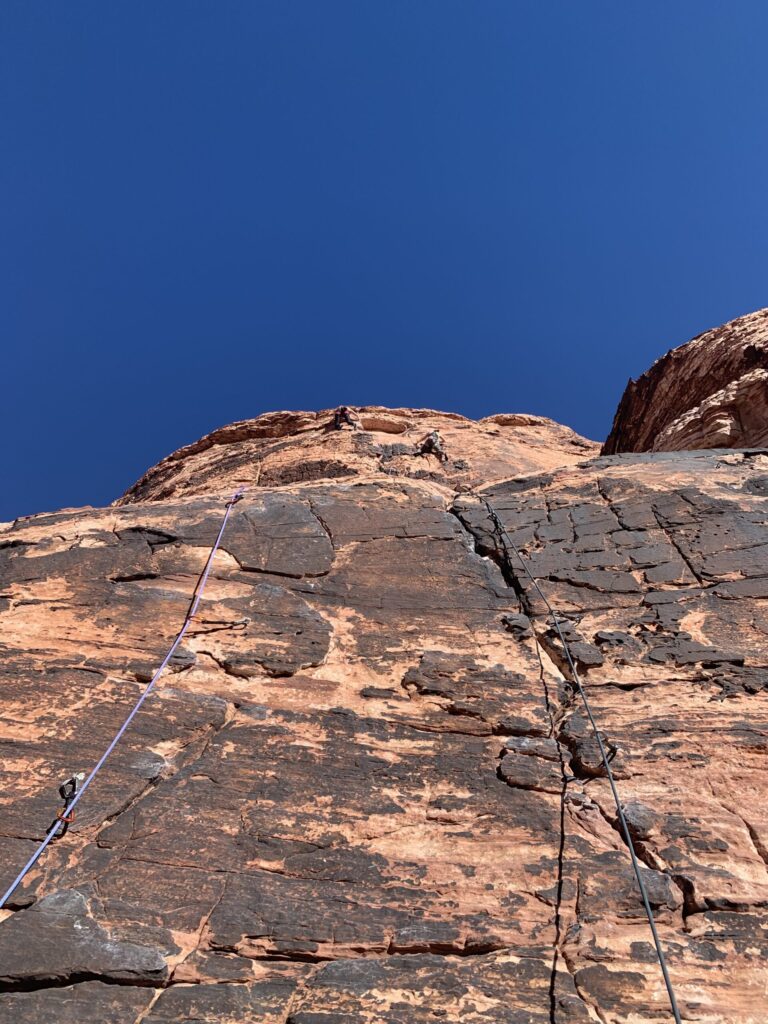
me (right) and my best friend Bailey (left) warming up together at Red Rocks
Success ideology
One of the most noticeable discrepancies between climbers is what they consider a successful day. It’s good to have a mix of different success ideologies in your friend group, but if you and your climbing friends don’t see eye to eye, it’s important that they can still understand your perspective and that you can understand theirs. I’ve come across four main types of success-ideology climbers, and you can see them listed below: the send mentality climber, the progress-oriented climber, the adventurer, and the chiller. Of course, multiple of these personalities can overlap in just one climber—people are complex!
It’s important to note that all of these traits can appear at any skill level, and none are objectively any better or worse to have than the others. Note too that this phenomenon is just what I’ve observed, and these broad categories undoubtedly have countless subdivisions and offshoots that are not explicitly listed here.
(images below are just for vibes, not examples)
- The Send Mentality Climber
- Climbers with a “send mentality” get the biggest rush from completing difficult routes without falling, ideally with someone there to watch and celebrate with them. These high-stoke perfectionists can get upset if they don’t reach their goals. They often pair best with progress-oriented climbers, who can inspire them to practice the patience necessary to reach those lofty goals, as well as encourage them to start projects that they might not onsight or send within a day. Send mentality climbers can get frustrated with adventurers, who might try to tear them away from their project to climb something more fun and/or scary.

My partner Tomo crimping hard on “Oops” at Peterskill (Shawangunk Range)
- The Progress-Oriented Climber
- Progress oriented climbers care more about hard work and steady improvement than they do about literal labels and benchmarks. These climbers know a lot about training, and they will always be offering you new workouts, hangboard routines, and footwork techniques. The progress-oriented climber is generally happy with a session if they felt strong, tried something difficult (whether they succeeded or failed), or climbed “well.” They care less about getting the official send, but it’s always a plus. Progress-oriented climbers also can feel like their goals are not ambitious enough if they’re able to complete their project within one session. You might see them hopping on something more difficult next time, even if they can only do a few moves. Progress-oriented climbers won’t always like send mentality climbers, and they will often butt heads, but the mutual benefits of this friendship are undeniable. Send mentality climbers can help progress-oriented climbers stick with their projects instead of moving on when they get bored. Hanging out with adventurers will get progress-oriented climbers out of the gym and into the world, as well as help them find some joy.
Me bouldering in Salt Lake City, early 2024
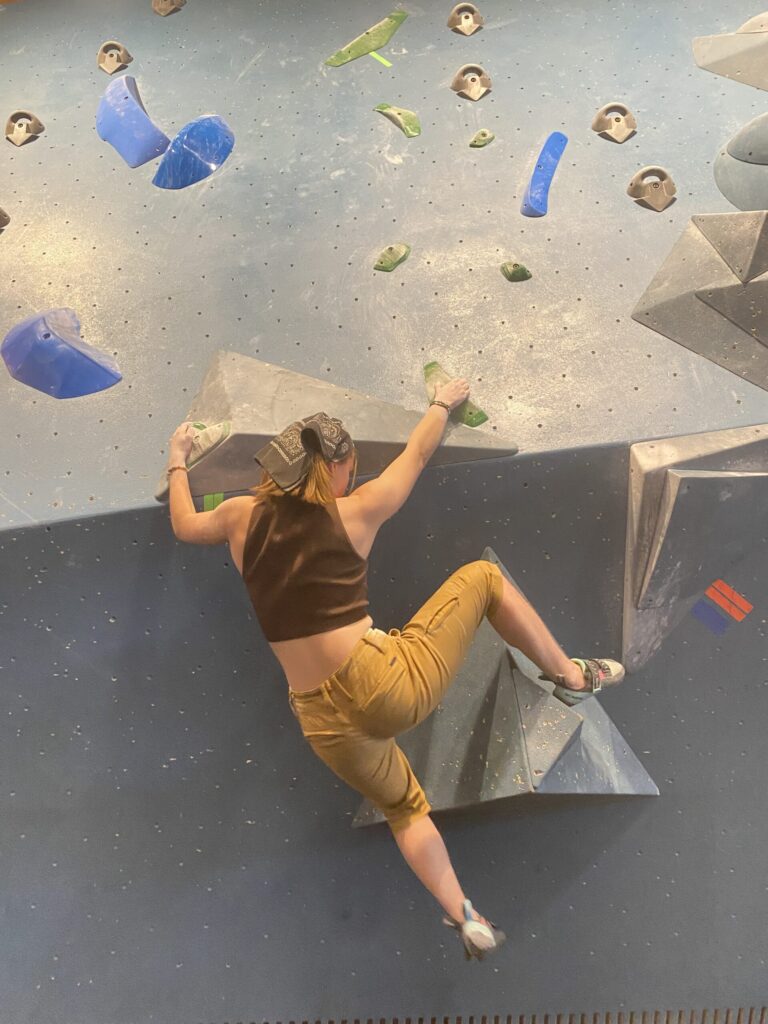
- The Adventurer
- These climbers don’t as much care what they’re climbing if they get a long day outside with a cool approach, unexpected and delicious takeout, or lots of new friends. Adventurers are easily bored and might eventually become your local trad dads, if they aren’t there already. Hanging out with progress-oriented climbers can help adventurers make sure they’re planning truly fun adventures and can anchor their spontaneity in routine. Adventurers can get along well with chillers from time to time, since both of them see the value in including other kinds of fun in climbing days. Indoors, an adventurer’s idea of success can mean trying every boulder on the new set, especially the ones with bat-hangs and toehooks, ordering food for the front desk staff, signing up for the next lead clinic, or bringing their guitar to the gym. Outdoors, the adventurer will probably prefer a long, varied multi-pitch with a stove-cooked meal at the end of the day over a try-hard single pitch project furnished with a just-add-water dehydrated dinner. Any trip has a much better chance of making it out of the group chat if there’s at least one adventurer involved (they would love this article).
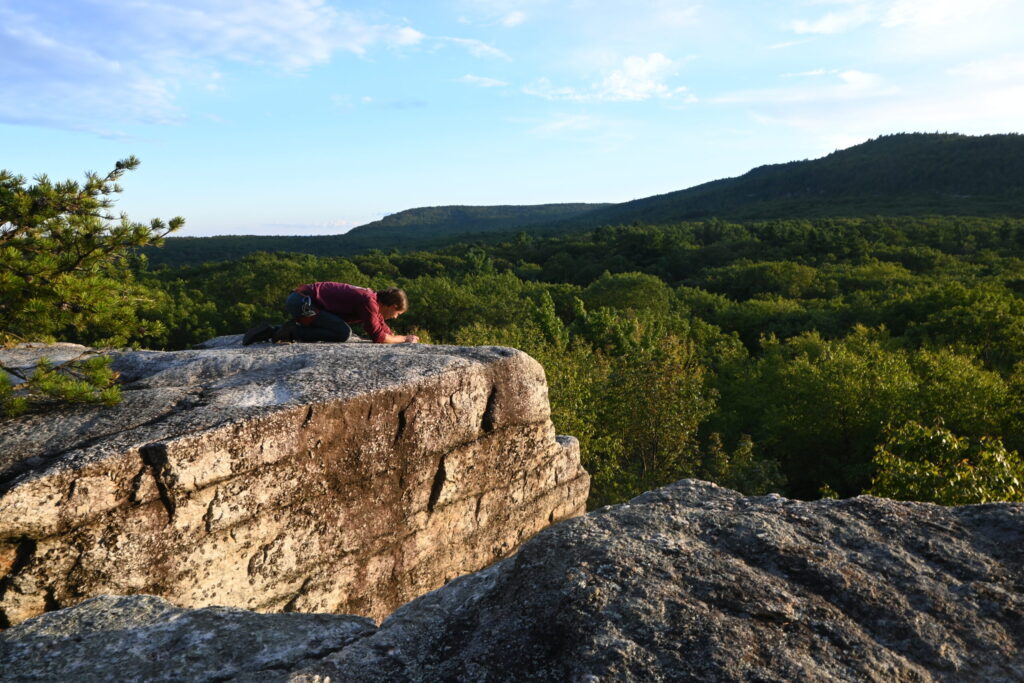
My friend Colin making sure our anchor for “Oops” is solid
- The Chiller
- Chillers just want to have fun—and that fun doesn’t have to be difficult, spontaneous, or even particularly exciting. More than anyone, they might appreciate the value in human connection, a good playlist, excellent climbing fashion, and flowy or aesthetically appealing routes. No matter how strong a chiller might be, try-hard days often aren’t actually fun for them. They’d rather climb one calm, long classic and then have an even longer lunch (can you blame them?). An adventurer might stress the chiller out, even though they have some similar ideas. Perhaps surprisingly, the chillers I know have had some of their best days with send mentality climbers. Since the send mentality climber will mostly be focused on their own goals, they won’t make the chiller do a damn thing, whereas a progress-oriented climber might ask if they’ve been doing their pull-ups and an adventurer might ask if they want to do donuts in the parking lot later. The chiller can also help the send mentality climber realize that life really is beautiful if you know where to look.
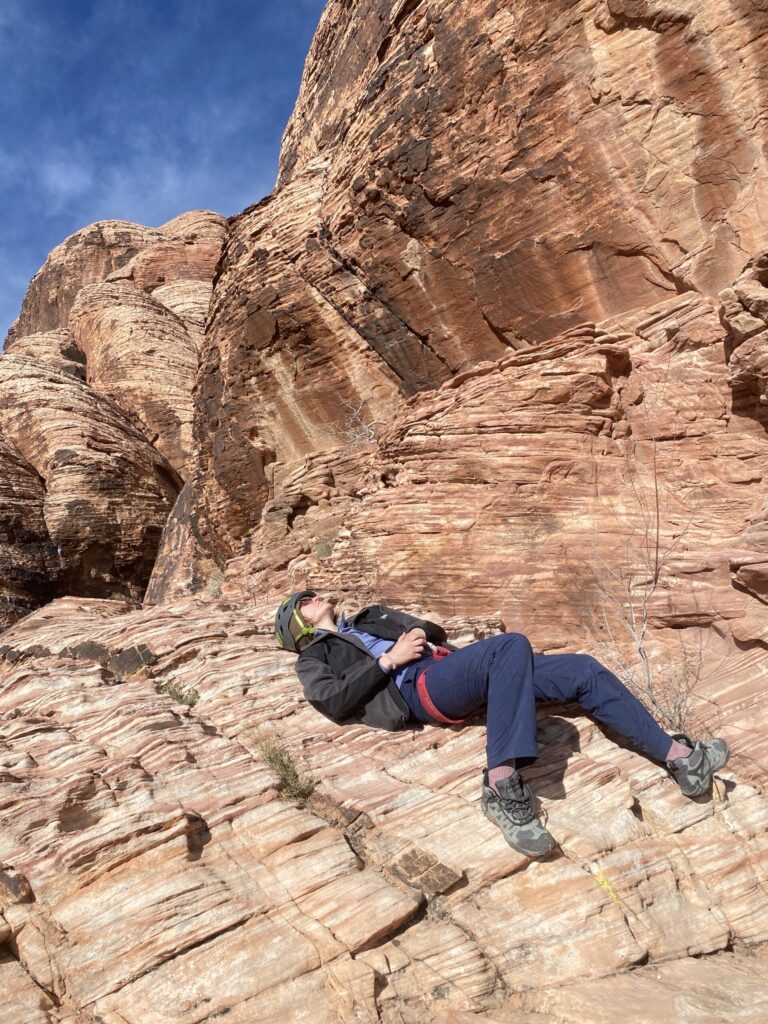
Bailey catching some rays at Red Rocks after tearing up a bunch of fun sport climbs
Identity Acceptance
All of us have a curated list of the traits and beliefs that make up our personhood. You don’t have to agree with your climbing friends about everything, nor do you even have to be particularly alike, but a general willingness to accept everyone’s most prevalent or cherished identities is crucial among your squad. Remember–the deeply social nature of climbing means that your climbing friends will probably have a big influence on your experience.
No matter how cool and strong that group of boulder bros is, if you are a woman and they only prioritize their male friends, you deserve better climbing partners. Maybe that particularly bubbly and social group of sport climbers seems like they could lift your mood, but if they have no patience for climbers with less energy, you deserve kinder friends.
Whatever your unique identities are, make sure that you’re spending time with climbers who embrace them rather than reject or merely tolerate them. This might seem like an obvious piece of advice, but it gets ignored more frequently than you might think. Go where you’re wanted, loved, and encouraged to be your best self. It’s worth it.
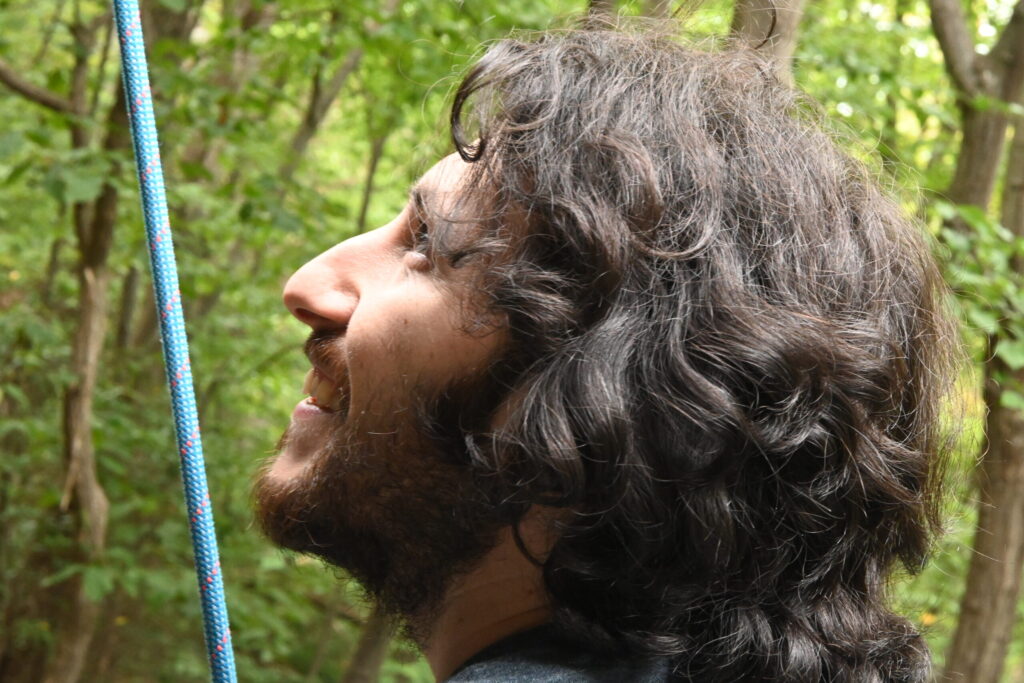
My partner Tomo at the Gunks earlier this month
Work Ethic
This is not the same thing as skill or experience. All too often, I see lots of super strong climbers huddled together around the one solid V8 in the gym and refusing to engage with a newer climber who’s gradually working their way through every V3 the cave has to offer. Surrounding yourself with people of equal stoke, regardless of what grade they climb, is an essential move to building out your climbing circle.
If you’re a new climber who really loves the sport and is always in the gym, don’t be afraid to approach a more seasoned athlete who’s there just as often as you and ask for beta or training tips. If you’re on the other end of this exchange and have been training hard for years, don’t hesitate to offer a belay to a hardworking new climber who could really thrive with just the right support.
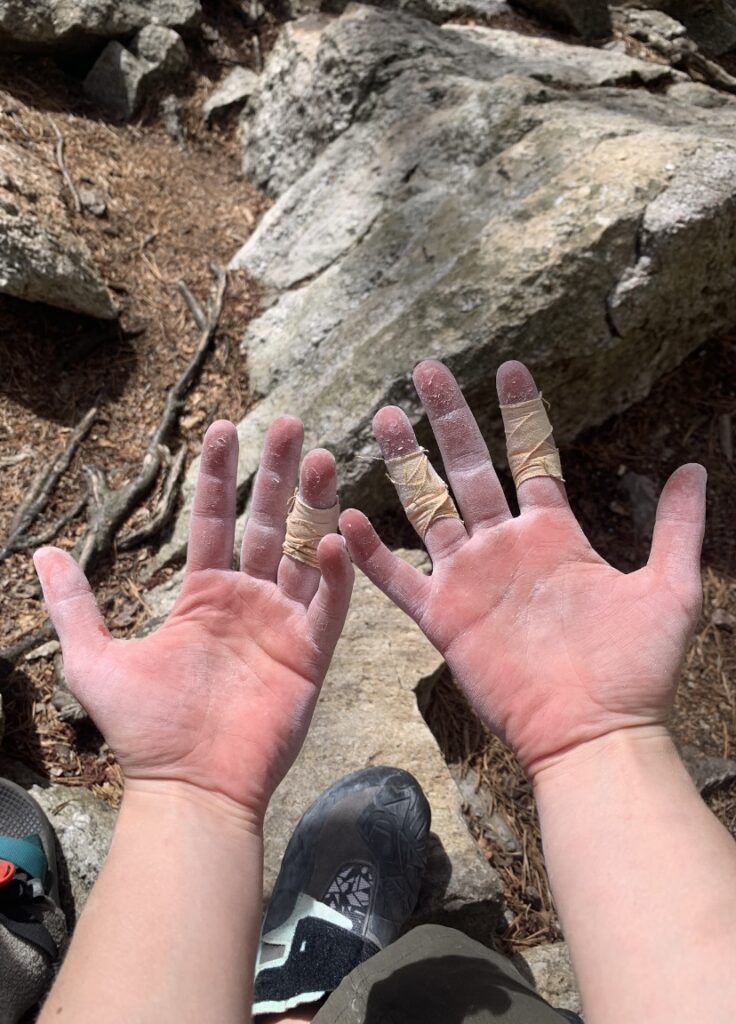
My hands all wrapped up for climbing at the Gunks this April
This goes both ways. Irrespective of what grade you climb, don’t feel pressured to gravitate towards the athletes who eat, sleep, and breathe climbing if you prefer a more laid-back environment. Maybe you just have better things to do, and would benefit from hanging out with an equally hobby-diverse gaggle of climbers. If you are super strong but don’t particularly care to compete for the FA of a newly-set hard toprope, have a chill session with a new climber who’s equally chill instead. If you’re just learning, totally go at your own pace. There’s no need to train every day if that lifestyle doesn’t speak to you, and find other climbers who feel the same so that you can make gradual but steady progress together.
Your work ethic also doesn’t have to match perfectly with everyone you climb with. Each kind of work ethic can be inspiring to the other. Just be alert, and notice consciously if your friends’ training styles start to feel more like undue pressure than inspiration.
Outdoor vs. Indoor Stoke
Climbing outside for the first time is not a solo adventure. Gear is expensive, and it requires a lot of skill to operate. Even if you’re not learning from a mentor, learning with friends is much cheaper, much safer, and much more fun. I know I personally would have struggled to get into outdoor climbing if I hadn’t had such wonderful peers.
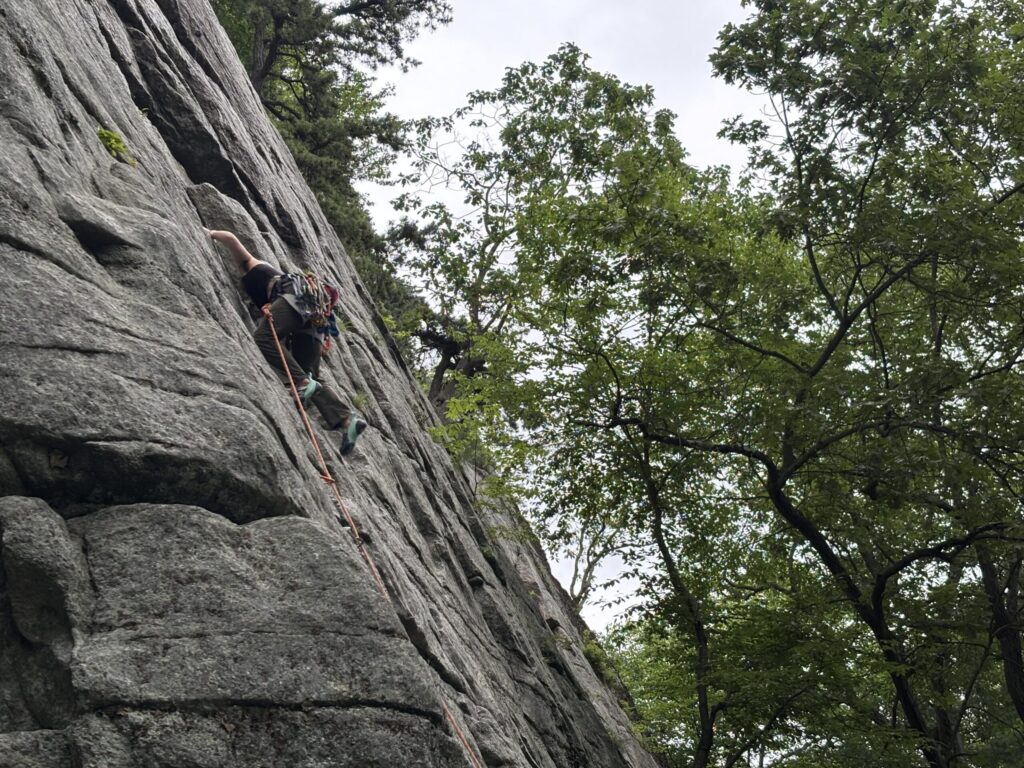
Me completing my first trad lead with a full rack of cams and nuts that is definitely not mine
If you much prefer indoor climbing, it can be exhausting to always be around climbers who only talk about splitter cracks and granite dihedrals. Outdoor climbers might be less interested in going to comps, watching the Olympics together, or spending much time inside. Find fellow dynamic athletes who will sign up for competitions with you, push your limits, and genuinely enjoy long days at the gym.
Conclusions
Most of us as people on earth implicitly know how to rely on others, even if it’s a subconscious skill. There are some aspects of that instinct, though, that benefit from conscious attention, especially when forming your climbing circle. Your climbing partners help you grow, learn, and become stronger each session, especially if there’s a strong harmony between your various qualities as climbers. If you’re smart about who you choose, your climbing partners may just end up being your best friends, too.
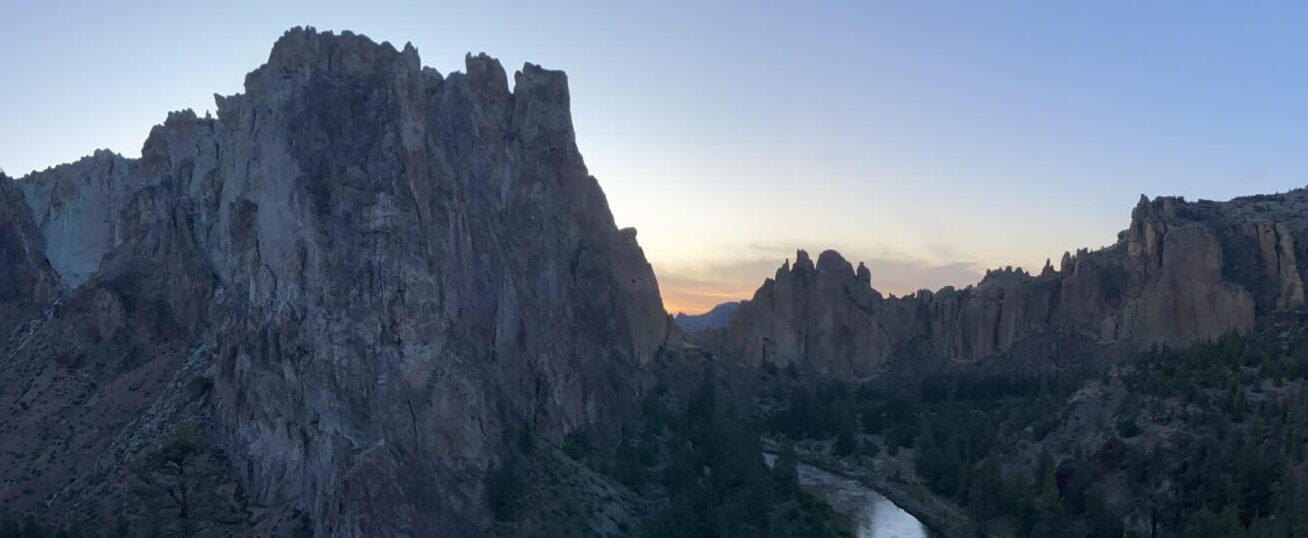
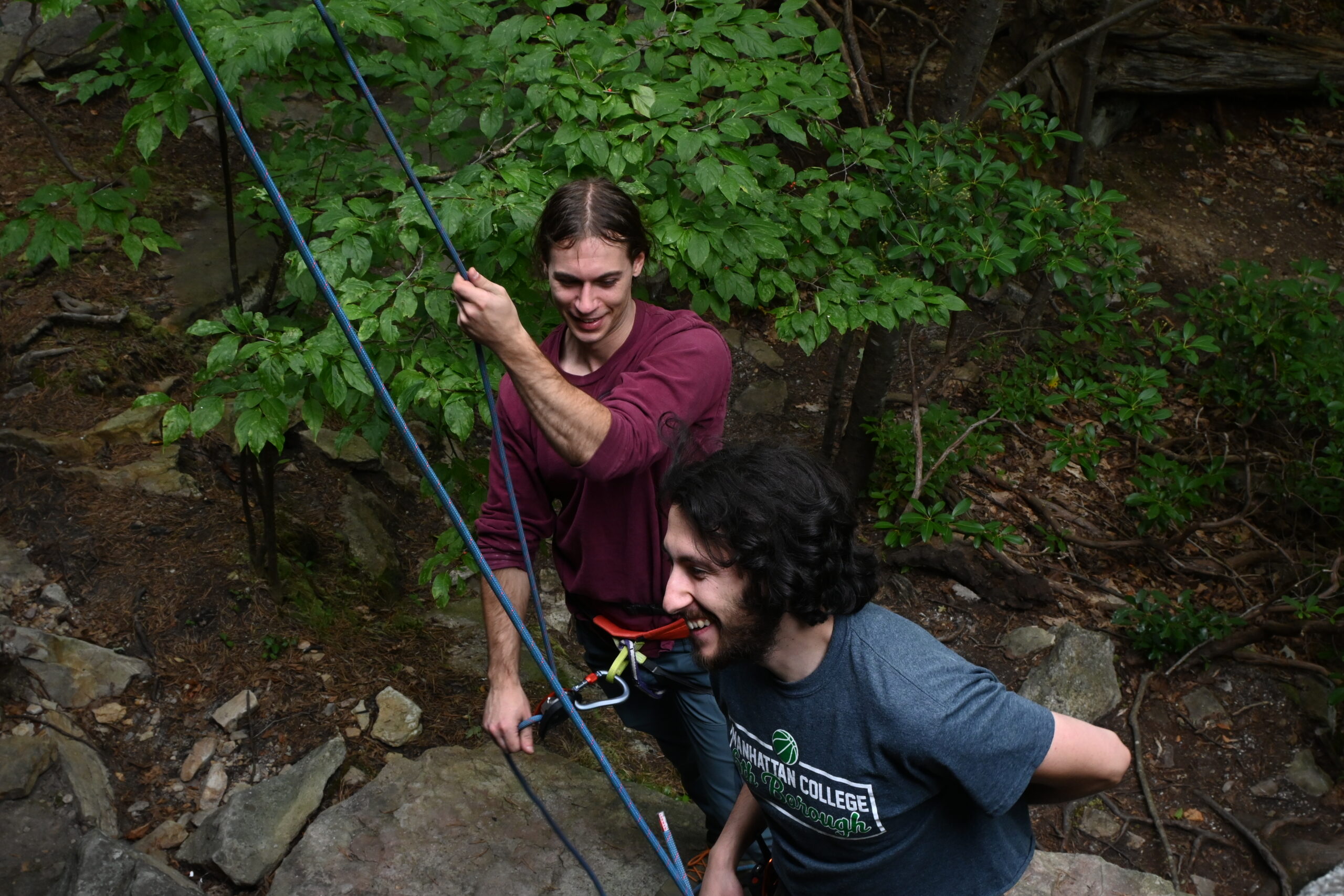
Leave a Reply